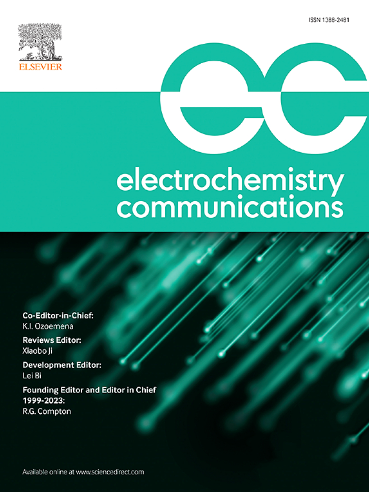Study on potential gradient in Ti anodization
IF 4.7
3区 工程技术
Q2 ELECTROCHEMISTRY
引用次数: 0
Abstract
Porous oxides or nanotubes are obtained through the anodization of valve metal. However, the mechanism of nanotube growth remains unclear. Traditional field-assisted dissolution (FAD) theory has many limitations, such as its inability to explain the connotation of the three stages in the current–time curve. By placing a container between two electrodes, the ions move around the container in a ring in the present study. The potential gradient during anodization was innovatively changed. Finally, the current–time curve obtained during anodization using the new device is quite different from that obtained using conventional anodizing device. This phenomenon is explained by the electronic current and ionic current theory in this paper.
钛阳极氧化电位梯度的研究
多孔氧化物或纳米管是通过阳极氧化得到的阀门金属。然而,纳米管生长的机制尚不清楚。传统的场辅助溶解(FAD)理论存在许多局限性,例如无法解释当前时间曲线中三个阶段的内涵。在本研究中,通过在两个电极之间放置一个容器,离子在容器周围以环形运动。创新性地改变了阳极氧化过程中的电位梯度。最后,用新装置得到的阳极氧化电流-时间曲线与传统阳极氧化装置得到的电流-时间曲线有很大不同。本文用电子电流和离子电流理论对这一现象进行了解释。
本文章由计算机程序翻译,如有差异,请以英文原文为准。
求助全文
约1分钟内获得全文
求助全文
来源期刊

Electrochemistry Communications
工程技术-电化学
CiteScore
8.50
自引率
3.70%
发文量
160
审稿时长
1.2 months
期刊介绍:
Electrochemistry Communications is an open access journal providing fast dissemination of short communications, full communications and mini reviews covering the whole field of electrochemistry which merit urgent publication. Short communications are limited to a maximum of 20,000 characters (including spaces) while full communications and mini reviews are limited to 25,000 characters (including spaces). Supplementary information is permitted for full communications and mini reviews but not for short communications. We aim to be the fastest journal in electrochemistry for these types of papers.
 求助内容:
求助内容: 应助结果提醒方式:
应助结果提醒方式:


